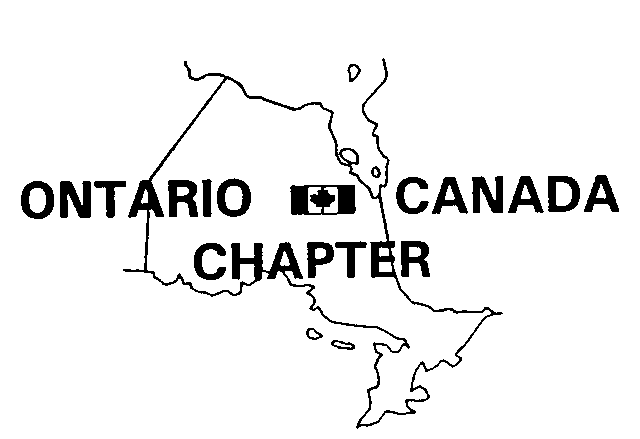National Emergency Number Association
|
 |
 |
NENA
|
March 3, 1999 – NENA TDC Conference
A Canada meeting was hosted, on Wednesday March 3, 1999 at 07:00 AM,with numerous members of the Canadian delegation attending the NENA TDC 99Workshop, in order to introduce Ron and to allow him to begin assessing theCanada specific needs.
The following are the minutes of that meeting.
Attendees:
Martine Beauchemin -Bell Canada, Quebec
Dennis Bohn -Manitoba Telecom System (MTS), Manitoba
Bernard Brabant – Bell Canada, Quebec
Richard Bzdega – BCT.Telus
Alberta Barry Elniski – BCT.Telus, Alberta
Sylvie Emond – Bell Canada, Quebec
Howard Epps – Stentor, Ontario
Adriane Jacquard – Maritime Telephone & Telegraph (MT&T), NovaScotia
Doug Joinson – Fraser Valley Regional District, British Columbia
CathyKeizer – MT&T, Nova Scotia
Chris Kellett – Edmonton 9-1-1, Alberta
Keith Lambe – Island Tel, Prince Edward Island
Bob Moody – BCT.Telus, British Columbia
Mike Myette – Nova Scotia – Emergency Measure Operations, Nova Scotia
Murray Reid – MTS, Manitoba
Keith Ritchie – Stentor, Ontario
Gary Rhodenizer – MT&T Mobility, Nova Scotia
Glen Rothenburger – BCT.Telus, Alberta
Glen Sabian – MT&T, Nova Scotia
Randy Talbot – Edmonton 9-1-1, Alberta
Judy Tottman – Bell Canada, Ontario
Dick Wells – R.K. Wells Inc., British Columbia
Ron Bonneau – NENA North Central Region, Illinois (USA)
Mark Adams – NENA Executive Director, Illinois (USA)
Bill Schaffel – Nortel Networks (observer), North Carolina (USA)
Wesley Tilley – Nortel Networks (observer), North Carolina (USA)
* Ron indicated that he would be assuming this role on aninterim manner, until the Canadian members can elect their own Regional VicePresident. He will also help us set our requirements.
* Theobjective is to elect a Canada Region Vice President as soon as possible. Wewill have to work on the NENA membership, in order to support the costs tosustain a Regional Vice President. Some goals will need to be established. Onthat same path, a brief discussion took place as to what it would take to becomean international association.
* Ron asked what were our expectationsfrom NENA. The participants indicated that we need to be aware of what isrequired from us to become our own Region (while remaining a part of the NorthAmerican NENA), with our own Vice President.
* An objectivesuggested by the participants was to allow the setup of an industry interface tothe Canadian Radio-television Telecommunications Commission (CRTC).
* First, it is required to set a NENA Canada Region structure. Ron indicatedthat he would be sending a letter to each Canadian NENA member.
* Once a structure is established, Ron would want to interface with a Canadacommittee formed by one NENA member per province. It was recommended, by thetelcos after the session, that the committee members be selected from the PublicSafety Answering Point (PSAP), municipal, county or governmentalrepresentatives.
* Dick Wells indicated that BCTel was the onlyIncumbent Local Exchange Carrier (ILEC) with a reference to the NENA standard inits 9-1-1 tariff. It was ordered by the CRTC.
* A requirement wasidentified that an official NENA letter should be sent to the CRTC indicatingthat Canada was now set as a Region of NENA. There are currently at least 150NENA members in Canada.
* Another requirement, in order to be ableto help us, is for Ron Bonneau to learn about the specific Canadian 9-1-1 issuesand affairs. Ron will be briefed about Canada in the coming weeks.
* Ron’s current focus will be set for the next three months, up to NENA AnnualConference in Charlotte. As indicated above, a Canadian conference call will beestablished, as soon as the provincial participants are identified.
* It was clearly identified that our goal was not to break from NENA, but to bean active Region within this Organization. Chris Kellett indicated that whilesome of the Canadian requirements may be somewhat distinct from the ones in theUnited States, the technological and operational issues to deal with are mainlythe same.
* A good discussion took place on the provisioning of PSAPs’back door number by NENA to Ford Motor. Mike Myette raised that it wasimportant that a process with clear rules be set first.
* In theUSA, a federal grant was the onset to this activity. Gary Rhodenizer indicatedthat some Wireless Service Providers were signing their own agreement for theprovision of these accesses.
* It was identified that issue like the proliferation of satelliteservice providers like OnStar, Protection One, ? is the type of issue to bedriven by NENA.
* It was pointed out that the provision of PSAPs’back door number was good until the number changes. That it was a two-edgesword. The satellite service provider must transfer the information to thePSAP. However, often the purpose is to “dump” the call to the PSAP,increasing the PSAP’s liability. It is important that the database collectionbe handled correctly.
* It was indicated that a good communication plan is needed to allowevery member to be informed about the future activities and to be able toparticipate to the process. Currently, we are using a Canada Region NENAdistribution list of known NENA members’ Internet e-mail address.
* Bernard Brabant to brief Ron Bonneau as to the specific of the Canadian 9-1-1environment.
* The meeting terminated at 08:15 AM.
Return to NENA Canadian Region Page |
